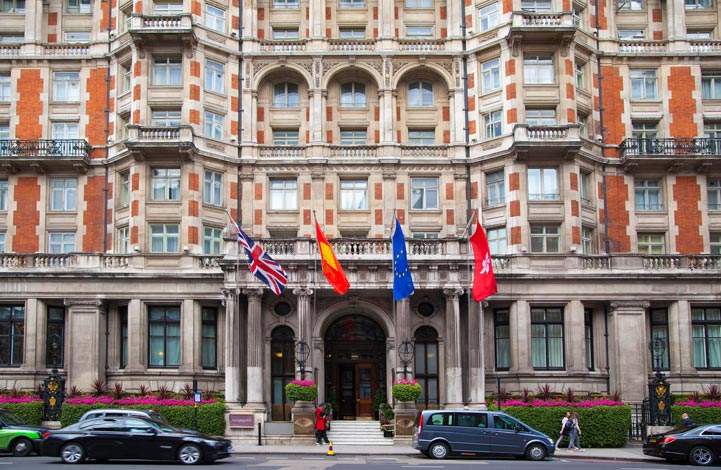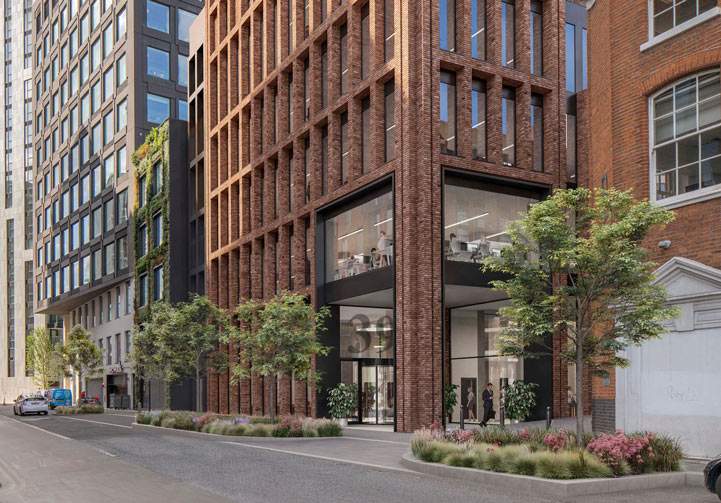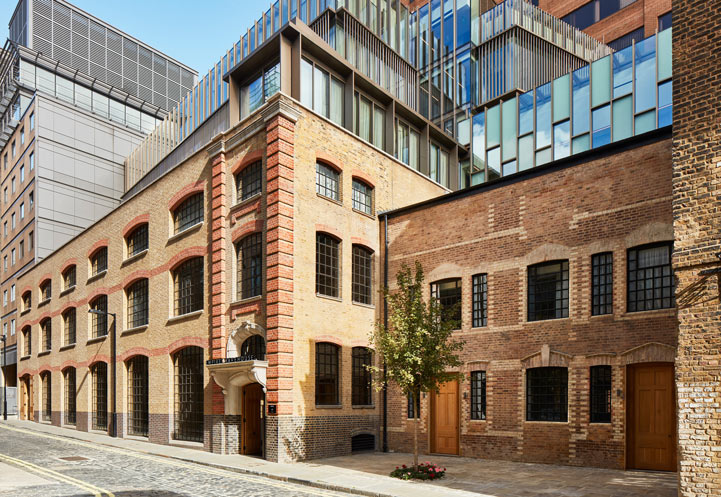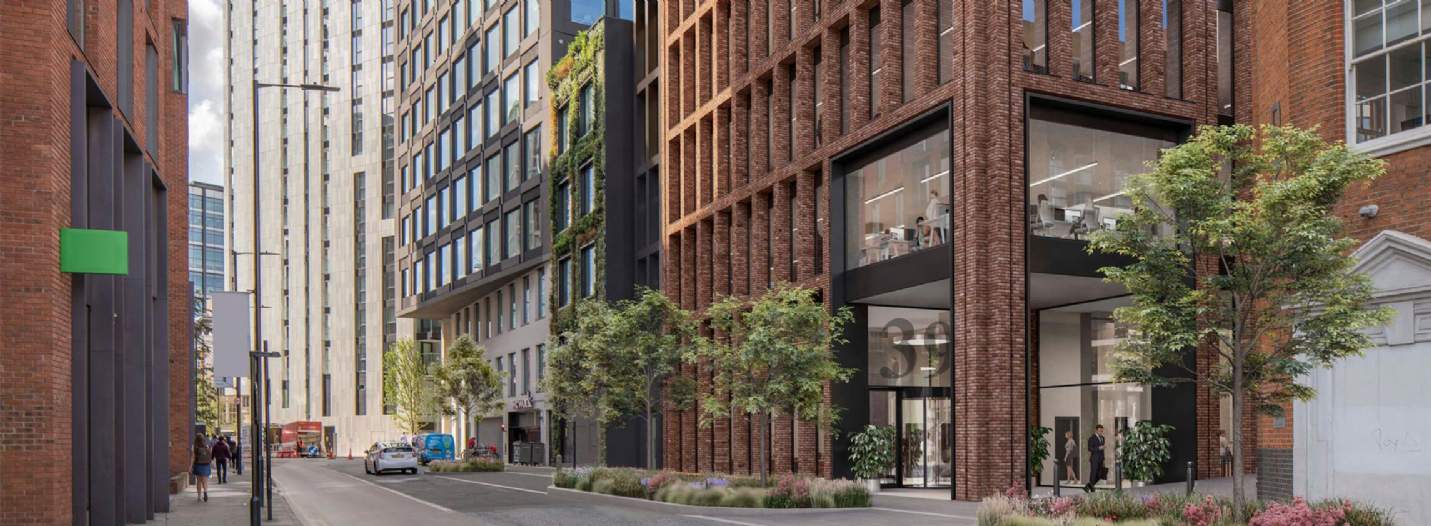Viewed as an inflation hedge, the fundamental drivers for investment into UK hotels remain unchanged. Transactions totalled £825 million in H1 2023, with activity dominated by private investors
Contents
- Key points
- Why hotels?
- Operational performance
- Segmentation, segmentation, segmentation...
- Top line growth; bottom line squeeze to ease
- Upward pressure on costs will abate
- Investment market outlook
- Yields
- Savills recent transactional evidence
- Debt markets
- ESG credentials of hotels
- Savills outlook
- UK Hotels Outlook Webinar
Key points
Operational performance
How sustainable are current occupancy levels and rates?
The big story on the operational side has been the speed of recovery in Revenue per Available Room (RevPAR), driven by a strong uplift in average daily rates (ADR). The UK regions led the initial recovery, fuelled by strong performance in ‘staycation’ markets in 2021 and 2022, but London lagged behind due to a slower recovery in international arrivals.
As the upward trend in ADR has continued into 2023, London has now seen its performance accelerate, as international arrivals return. London Hotel RevPAR for the first five months of 2023 was 21.6% above the equivalent period in 2019, driven by a 28.0% increase in ADR. Similarly, we have seen regional hotels, staycation markets and serviced apartments also continue to perform well into 2023.
But can these new rate highs be sustained?
Clearly, the degree of ADR growth we have seen recently is not sustainable. But, overall, we do believe that ADRs have reached a new normal, and it is highly unlikely there will be a correction to pre-Covid levels.
The current levels are being underpinned by the strength of demand, which has accelerated post-pandemic, despite the squeeze placed on real disposable incomes. This is because households are prioritising holiday (experience) spend, supported in part by excess savings. Rising costs and the subsequent impact on operator margins are also playing a part, with some operators preferring to prioritise rates over occupancy in order to protect their bottom line.
These revenue/cost dynamics, combined with resilience in demand, will sustain rates and occupancy going forward. As always, there are certain geographies and segments that are better placed than others to maintain and even grow top-line performance.
London & Edinburgh regain their lead-performer status
The return of international travel has meant that London and Edinburgh were the strongest city performers over the first five months of 2023. ADRs were up 19% and 20% YoY, respectively, despite occupancy recovery lagging some other UK markets.
Tourism Economics is forecasting a faster-than-expected recovery in international travel over the next 18 months, with global air passenger numbers set to be 19% higher than pre-Covid levels by 2025, so we expect London and Edinburgh will continue to be lead performers going forward.
This would be a continuation of a pre-pandemic trend, where both cities saw RevPARs grow by an average of 3.4% and 2.7% per annum, respectively, between 2016 and 2019, against a backdrop of rising supply (+2.3% and +4.9% per annum) - highlighting the ability of both markets to absorb new supply without negatively impacting wider market performance.
Short-term challenges will materialise for some regional cities
There is more risk to the sustainability of current rates and occupancy in the UK regional market. A number of regional cities have posted robust performance to date this year, particularly those with a strong corporate and leisure demand base. The concern, however, is that this performance is being underpinned by reduced levels of supply, due to a proportion of stock being let on government contracts.
As and when this supply returns to standard Hotel use, wider market performance will no doubt be impacted, as there will be a reduced ability to maintain and drive rates.
The effect of this is likely to be more pronounced for mid-market product in smaller regional markets, which are more reliant on corporate demand. A slowing economy, forecast for 2024, would exacerbate this, as there is historically a correlation between regional hotel performance and GDP.
Staycation markets have already corrected to their new norm
We are seeing potential signs of rate instability in the ‘staycation’ markets. The strong ADRs and, in turn, RevPAR levels that were seen over the latter part of 2021 had already softened last year, with these markets reporting year-on-year average ADR declines of 6.7% from June through to September. ADR decline, on a year-on-year basis, continued over the first quarter of this year, offset by improving occupancy, which helped to drive RevPAR.
Going into summer 2023, we expect to see another contraction in rates, particularly as Covid restrictions have been fully removed and Sterling has recently strengthened against the euro, further enhancing the appeal of a European holiday. But, we are not looking at a correction to pre-Covid rates. Occupancy continues to improve, and the demand, particularly for strong lifestyle-type product, supported by consumers’ prioritisation of holidays, will ensure current RevPAR performance is maintained. The prospect for future growth, however, is less certain.
Segmentation, segmentation, segmentation...
Geography is not the only determinant of future performance. Increasingly, segmentation and brand have been key to maintaining and driving performance.
In the case of London, pre-Covid, the luxury segment was the lead performer, with RevPAR increasing by an average of 5.4% per annum (2017–19), driven by a 4.0% per annum uplift in ADR. Over the last 18 months, we have seen a similar trend, with FY 2022 ADR in the ultra-luxury segment 31.9% ahead of that reported in 2019. This is more than double the level of growth seen for other London segments.
Looking ahead, London luxury will continue to be a lead performer. Occupancy recovery will be the core driver of growth over the next six months, given there is a current 14% occupancy differential to 2019 levels. Beyond 2023 there is some risk of ADR softening in the wider market, due to the 10% increase in new luxury supply through to end of 2025. The first UK outposts for The Peninsula, St Regis, Raffles, and Six Senses are all scheduled to open over the next two years, as well as Rosewood’s second London outpost, The Chancery Rosewood, at Grosvenor Square.
Any potential dampening to ADR next year will be offset by further occupancy improvements, meaning top-line RevPAR will continue to improve. This challenge to rates will be more pronounced for luxury assets in peripheral locations, particularly where branding and quality are more compromised. Core ultra-luxury offerings in prime West End locations will be more insulated. In fact, the nature of the suite-type product that will be delivered by a number of those luxury hotels in the pipeline will elevate London’s luxury offering and further enhance the city’s appeal to super-wealthy travellers, supporting future operational growth.
The more interesting story in the limited-service part of the market is the rise in serviced apartments. It is a segment for which the market drivers have accelerated post-pandemic, as evidenced in its YTD performance against 2019 levels. Perhaps its biggest appeal, alongside that for economy-grade hotels, is its typically lower costs and higher margins.

Top-line growth and bottom-line squeeze to ease
Historically, focus has mostly been on top-line performance, with operational costs, and therefore margins, taking second billing when it came to assessing hotel performance.
This was already on owners' radars, as staff availability constraints were placing upward pressure on staffing costs, generating downward pressure on margins. These cost pressures have since been amplified. Not only have staff availability challenges become more acute, but operators have also faced significant increases in energy costs. As a result, in certain instances, we have seen EBITDA soften against 2019 levels. With lenders scrutinising profitability more than ever to ensure appropriate interest coverage ratios (ICRs) in the face of rising debt costs, protecting and even driving margins has become the focus.
When it comes to profitability, it is very difficult to generalise across geographies and segments, as it is often the strength and expertise of the operator that dictates the ability to maintain and even improve margins. Better operators have mitigated the impact of rising costs by delivering efficiencies, whether this be through enhanced sustainability and energy standards, improved operational efficiencies or in some cases reduced service levels. Importantly, these measures must be balanced by meeting customer expectations, to maintain top-line performance.

Some segments are better placed to weather cost pressures
Notwithstanding differences between operators, there are some segments that are fundamentally more resilient to cost pressures. Economy hotels, serviced apartments and hostels are all segments where the limited service offering has insulated them (to some extent) from the recent upward pressures on costs.
They are also segments where EBITDA margins tend to be higher, providing a greater ‘cushion’ to cost challenges, a key attraction when lenders are scrutinising ICR. Serviced apartments have emerged as a segment that can deliver in terms of both operational and profitability resilience.
Upward pressure on costs will abate
Slowing inflation should increase consumer confidence, fuelling demand for hotels
The good news is that these upward cost pressures look to be abating. Inflationary costs are proving quite sticky, but forecasts suggest these cost pressures will soften. Oxford Economics predicts that UK CPI will slow to 3.8% by the end of this year, while food inflation – which is already slowing from its March peak – is expected to reach 9.8% by year end. Similarly, wholesale gas prices for the coming winter period have fallen back 81% from their peak in August 2022, albeit they remain some 142% above pre-Ukraine war levels. Slowing inflation also means real disposable incomes moving back into positive territory, which bodes well from a demand perspective.
The recent business rate revaluation is also playing a part in offsetting some of these upward pressures. Nationally, on average, there has been a 28% reduction in hotel rateable values, with the greatest beneficiaries being large London hotels. For example, central London hotels with in excess of 500 rooms have seen their rates bill reduce by an average of £1 million, with some reporting as much as a £2.7 million saving.
By contrast, there is a small number of hotels in ‘staycation’ markets that have seen their rates bill increase, as the date of the revaluation in April 2021 was when staycation markets were performing strongly, whereas international visitor-driven markets like London were floundering.
While the next revaluation date of 01 April 2024 is likely to result in an increase in rates, effective from April 2026, the current rate reduction is delivering an important respite to operators at a time when their other costs remain relatively high.
Investment market outlook
Yields to soften, but the value of hotels relative to other asset classes has great appeal
Hotels have not been immune to the headwinds facing the wider commercial real estate investment market. The rising cost of debt and the resultant mismatch between seller and buyer expectations have significantly reduced deal activity year to date, with estimated volumes for H1 2023 totalling £825 million, some 66% below the ten-year H1 average.
As we saw over the latter part of last year, activity continues to be dominated by private investors, who are taking advantage of reduced buyer competition. As a group, their decisions are less debt-driven, with wealth preservation and the inflation hedge offered by hotels being key drivers.
The active buyer pool beyond these private investors is thin, but there is a willingness to do deals where the specifics stack up, as demonstrated by Dalata’s recent acquisition of the long leasehold interest in the Apex London Wall Hotel, which they have subsequently rebranded as Clayton Hotel London Wall.
Indicative prime yields continue to hold at end of 2022 levels, supported by investor appetite and lack of stock. The recent acceleration in debt costs following the 50 bps increase in the Bank of England base rate in June, on the back of ‘sticky’ inflation numbers, may generate the ‘soft’ pressure needed to bring more motivated sellers to the market and move yields out. We are already aware of approximately £10 billion of assets being prepped for sale, with a number of IRR-motivated owners looking to bring assets to the market, essentially clearing the decks to start again.
Yields
We’re not looking at a return to GFC or even 2006 levels
While we do expect yields to soften over the coming months, we are not looking at a return to the pricing seen in 2006, when debt costs (as reflected in the five-year SWAP) were at a similar level, or even to the levels seen during the peak of the 2008/09 global financial crisis (GFC). Things are very different now.
Firstly, there is not at a debt availability crisis. Secondly, investor appetite for Hotel assets is much greater, supported by global demographics and shifts in consumer spending, and attracted by the inflation hedge offered by Hotels, particularly non-leased assets. Reduced investor confidence in some parts of the Office market will also accelerate the evolution in the buyer profile for hotel assets as real estate investors look to pivot into better-performing sectors.
Hotel’s relative yield/debt cost spread, when benchmarked against other asset classes, will also keep yield decompression to a minimum, as it’s been those sectors with the keenest yields that have seen the greatest degree of yield softening since early 2022.
The sector’s yield spread to relative debt costs (five-year SWAP), compared to other asset classes, will also add to its investor appeal, further preventing significant outward yield shifts. For example, indicative prime yields, other than those for leased assets on strong covenants (the likes of Premier Inn), have a minimum spread to five-year SWAPs of +16 bps, reaching +66 bps for leased assets with weaker/ unproven covenants (see chart, below). With expectations of falling interest rates next year, this spread to debt costs is set to widen.
Debt markets
Seeing renewed appetite
"Despite the uncertain economic environment and recent rises in interest rates, lenders continue to display strong interest in hotel financing opportunities.
We are seeing renewed appetite for hotel financing opportunities as lenders recognise the sector’s strong fundamentals and look to relocate exposure from other mainstream asset classes, such as offices, which are facing increasing headwinds.
With recent strong performance and a range of operational levers within their control, hotel asset managers are better placed to drive revenue growth in an inflationary environment than assets with more fixed income streams.
All types of lenders, be those banks or non-banks, are demonstrating strong demand to support investment and development opportunities, which is resulting in a large number of lenders competing for the highest quality opportunities.
As you would expect, the bank market remains more conservative in terms of the leverage on offer, and given the increase in underlying rates, the non-bank market is able to be increasingly competitive whilst also offering higher leverage.
We are working with a number of investors at present to review their business plans and proactively refinance. It is clear from these processes that it is more important than ever for sponsors to take informed advice in order to successfully navigate what has become a complex lender landscape and secure themselves the best possible terms.
Savills Capital Advisors is regulated by the Financial Conduct Authority (FCA) and operates across all real estate sectors, delivering structuring and financing services to a broad range of clients.
ESG credentials of hotels
Delivering social value and placemaking
"In the 2022 Booking.com Sustainable Travel Report, 81 per cent of respondents from the global travelling community confirmed that sustainable, responsible travel is important to them.
As part of this shift in attitudes within the sector, social value is being recognised for the role it can play in ensuring hotels are more inclusive spaces for the people using them as well as their surrounding communities.
Hotel developers are increasingly embedding social value considerations throughout the pre-and-post development phases of a scheme, looking at how people will use the hotel, engage with its spaces (both internally and externally) and its impact on the local community.
Social value can even influence the design of hotels, for example considering the provision of dual access to areas such as gyms and meeting rooms, to allow for use by the local community, or altering design to consider the needs of neurodiverse guests.
Some hotels are ensuring they contract with local enterprises during the interior fit-out of the scheme with furniture, artwork, etc., in order to engage local talent and provide an economic boost to the area surrounding the hotel. An example of this is room2 at its Chiswick asset in London, which sourced the majority of its loose fixtures and fittings from within a ten-mile radius, supporting and celebrating local artists and producers as well as reducing its overall carbon footprint.
Operators play a key part in delivering social value. The Booking.com 2022 report found that travellers still find it difficult to access information on activities and tours that enable them to engage with the culture of the area they are visiting. This is a prime opportunity for Hotels to collaborate with local enterprises and serve as a hub connecting local communities to global travellers.
A growing number of investors are committing to socially-minded projects, from volunteer hours to conservation and charity work. An obvious area for hotel groups to create social value is through employment opportunities. Some groups are working with rehabilitation of offender programmes, such as The Clink in Brixton Prison, which trains prisoners in skills required to work in commercial kitchens.

Native Bankside, London
"Careful consideration of social value is becoming increasingly embedded throughout both the pre- and post-development stages for hotels.
In my experience, the key to creating greater levels of social value is to engage early with local communities and a wide range of other stakeholders in order to fully understand the needs and opportunities within the hotel itself, as well as the local area.
Savills outlook
What do the next 12 months have in store?
-
Continued investor appetite
We are seeing investor appetite and a willingness to do deals, both on the vendor and purchaser side.
This, coupled with the volume of opportunities being readied for market, means we expect transaction volumes over H2 2023 to be up on the £825 million reported for H1.
-
Momentum to build in H2 2023 and early 2024
Improving momentum in H2 will continue into 2024, propelled by softening yields, lower cost of debt and continued robust operational performance.
This should help drive annual transaction volumes back up closer to long-term averages, with yields likely to come back in again once debt costs start to subside.
-
Evolving buyer pool
Of particular interest will be the evolution of the buyer pool over the next 12 months.
A challenge for new investors will be the perceived risk associated with operational exposure.
While leased hotels are likely to prove the primary route into the sector, their limited availability means some investors will need to move up the risk curve to gain access, either through leased assets with weaker covenants and/or direct operational exposure through a management contract with an operator.
Either way, getting comfortable with the operator will be key to delivering returns.
-
Repurposing of offices
An increase in office conversions will be another trend over the coming months, as there are significant challenges facing poorer quality office buildings in peripheral locations.
For many of these assets, occupational demand and rental tone are not at a level to support the extensive refurbishments needed to improve sustainability credentials to levels demanded by Government legislation (proposed Minimum Energy Efficiency Standards will require all leased commercial buildings to have an EPC B or above).
This is forcing owners to look at alternative uses. Hotel conversion is an option, and micro-location and building footprint will be key to determining viability. The good news for office owners is that there is a wide range of potential hospitality options, from hostels to full-service hotels, subject to the location and building fundamentals being suitable.
-
The fundamental drivers are strong
Ultimately, the fundamental drivers of demand for UK hotels remain unchanged, and many of them have even accelerated post-pandemic.
As a result, hotels have one of the best growth stories across the real estate spectrum, offering the flexibility to drive income and profit, whether through changing manager, brand or operational structure.
This flexibility, alongside its credentials as an inflation hedge, is moving the hotel sector up the target list for a wide variety of global investors.
UK Hotels Outlook Webinar
Watch our UK Hotels Outlook Webinar – 'Managing the Balance'.
Our experts Marie Hickey, Director of Research, Robert Stapleton, Head of UK Hotel Capital Markets, and Martin Crocker, Director, Savills Capital Advisors, discussed the key findings of our UK Hotel Spotlight 2023, followed by a Q&A session with webinar attendees.
The Webinar explored topics including resilience in operational performance, investment trends, the debt markets, and the outlook for the next 12 months in the sector.
